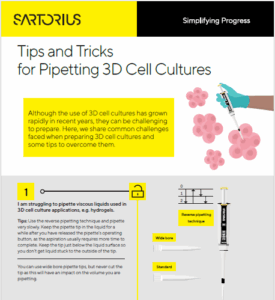Working with 3D cell cultures—such as spheroids, organoids, or scaffold-based systems—brings critical advantages for modeling physiological conditions. However, pipetting these complex structures often introduces technical challenges that can compromise reproducibility and data quality.
This infographic was developed for laboratory professionals who need practical, science-backed strategies for improving pipetting technique in 3D systems. Whether you’re preparing cultures for drug screening, toxicity testing, or translational research, this resource helps you optimize handling while maintaining structural integrity.

What you’ll gain from this resource:
- A clear overview of common pipetting issues in 3D culture workflows
- Actionable tips to reduce disruption to cell structures during handling
- Best practices to enhance consistency across replicates and plate formats
- Workflow improvements that support both efficiency and accuracy
You’ll benefit from this infographic if you:
- Conduct contract or third-party testing involving 3D cell models
- Work in pharmaceutical R&D, CROs, or academic research settings
- Are responsible for training lab personnel or standardizing protocols
- Seek to improve assay reproducibility and cell viability in 3D systems
Get the infographic now!
Supporting high-quality results starts with reliable techniques.
